Do you love Goldendoodles but don’t have space in your home for a big dog? Well, if you love Doodles and have your heart set on bringing home a cute teddy bear puppy, there is a solution!
Goldendoodles come in different sizes! But is a Teacup Goldendoodle the same breed as a Toy Goldendoodle, and are these two varieties of Doodle the same weight and size? How big is a Mini Goldendoodle when full-grown? You need to know!
Read this guide to discover the difference between these Goldendoodle breeds and learn how to care for these gorgeous petite pooches.
Table of Contents
Miniature Goldendoodle Sizes
With their teddy bear looks and happy-go-lucky, lively personalities, Goldendoodles are top of the chart of all the Poodle crossbreeds. And the breed comes in many different sizes, too, including miniature varieties.
Teacup Goldendoodle Size
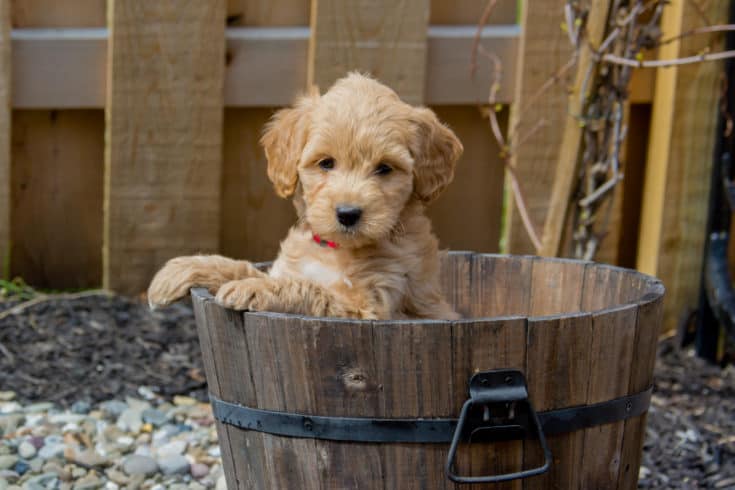
Teacup Goldendoodles are the smallest variety of Doodle.
You can expect a full-grown Teacup Goldendoodle to grow to stand between 8 and 13 inches at the shoulder, which is roughly the same height as a sheet of A4 paper!
A Teacup Goldendoodle can weigh as little as 7 pounds. That’s light enough for you to carry in a purse or doggy carry-bag if you take public transport, and this little pup will comfortably fit into the smallest car, too.
Toy Goldendoodle Size
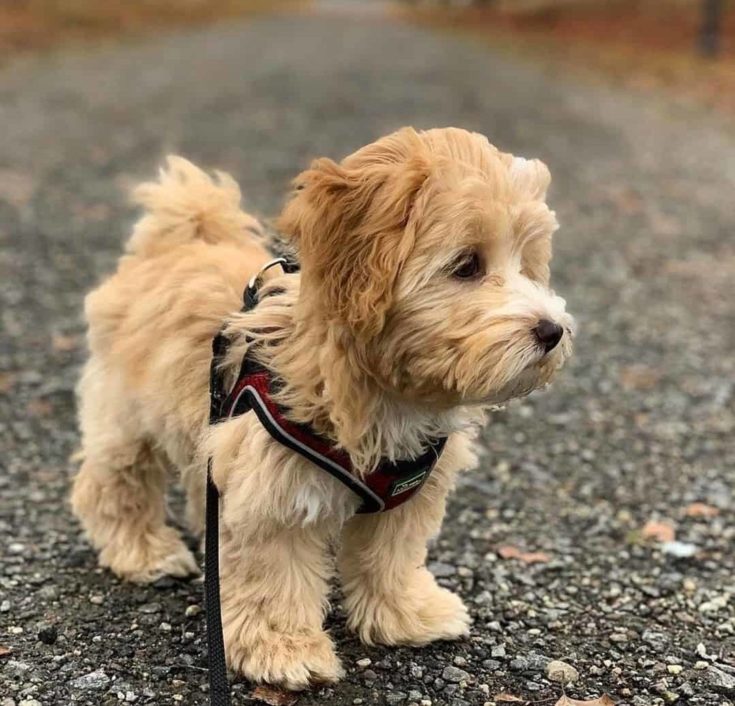
Toy Goldendoodles are sometimes called Petite Goldendoodles.
A Toy Goldendoodle will grow to stand between 10 to 16 inches tall at the shoulder and weigh from 10 to 20 pounds.
Mini Goldendoodle Size

Mini Goldendoodles typically grow to between 13 to 20 inches tall at the shoulder, weighing in at 15 to 35 pounds.
These little dogs fit easily into a small pet carry box or can ride comfortably in a small family car.
Care of Miniature Goldendoodles
Teacup, Toy, and Mini Goldendoodles’ care requirements are pretty much the same.
Diet and Feeding
Whatever the size or breed of dog you own, feeding him the correct, nutritious diet in the right quantity is crucial if your pet is to thrive.
You can learn more about how to feed your Goldendoodle throughout all his life stages in the detailed article at this link.
Choose a high-quality, commercially prepared food that includes these essential nutrients that every dog needs:
- Protein – for lean muscle development and growth
- Fat – your dog’s primary source of energy
- Omega-3 and Omega-6 – essential for healthy skin and coat, brain, and eye development
- Fiber – for a healthy digestive system
- Vitamins and minerals – crucial for vitality and general wellbeing
- Carbohydrates – for extra energy
Make sure that your dog has fresh, clean water available 24/7, especially if he is eating a dry diet.
Foods To Avoid
Large dry food pieces can cause choking and are difficult for petite pups to eat, so always buy micro kibble that’s specially formulated for tiny mouths.
Foods to avoid include:
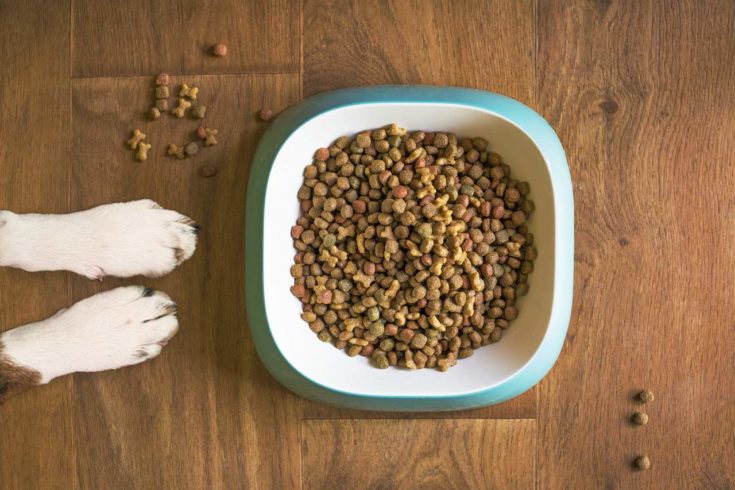
- Fillers, including cereals – little nutritional value
- Artificial preservatives, colors, and flavorings
- Starchy grains – can cause bloat in deep-chested Goldendoodles
- Dairy products – Goldendoodles can be lactose intolerant
How Often Should I Feed My Miniature Goldendoodle?
I recommend that you feed your dog twice a day. That can prevent bloating and helps to spread the load on your pup’s digestive system.
Healthcare
All puppies should be vaccinated against common canine diseases, including:
- D.H.P.P. (distemper, hepatitis, parainfluenza, and parvovirus)
- Leptospirosis
- Rabies (if known to be present in your area)
- Lyme disease
- Bordatella (Kennel Cough)
Your Goldendoodle will need annual boosters for these conditions.
Parasite Control
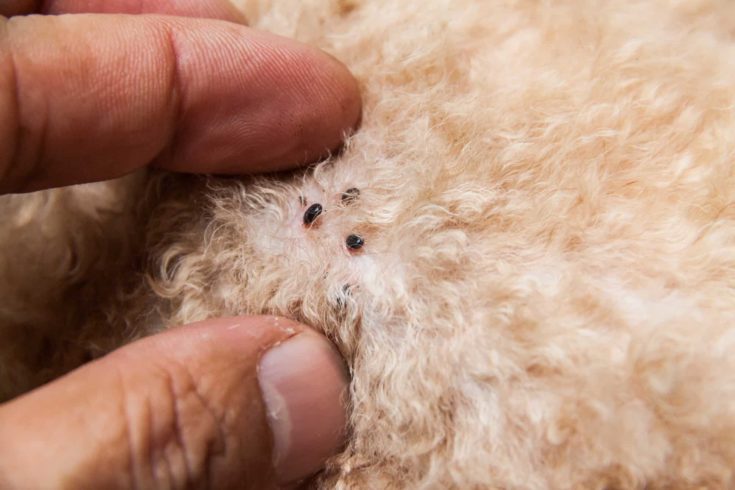
Fleas and ticks can find their way onto your dog, often from socializing with their canine chums in the dog park or through encounters with wildlife while out walking. Also, if your mini pooch decides to chow down on something that contains worm eggs or larvae, your pet could become infected.
Fleas, ticks, and worms can present a serious health hazard for you, your family, and your dog, so ask your veterinarian to recommend a parasite control regimen for your pint-sized pup.
De-sexing
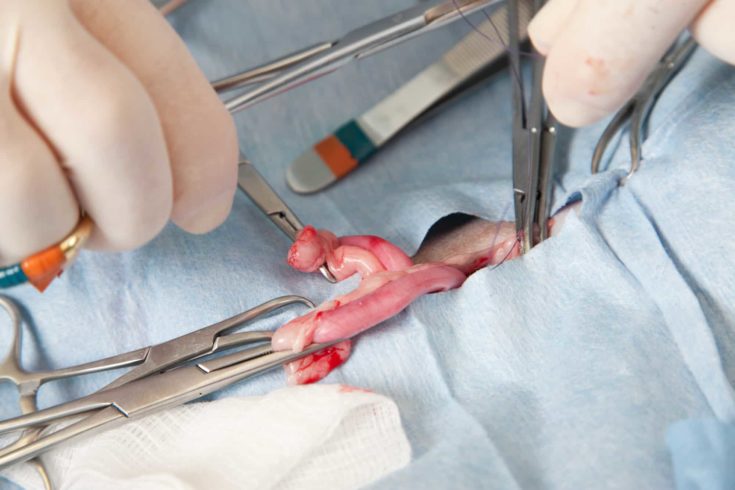
You’ll need to have your pet spayed or neutered before you can have him licensed. Also, de-sexing helps to prevent unwanted litters of puppies and can discourage dogs from straying.
Genetic Health Conditions
Although hybrid dogs are generally healthier than their purebred counterparts, tiny crossbreed dogs can be susceptible to health problems. We’ll explain why that is later in this article, but here are a few of the common issues that can affect teacup and toy dog breeds:
- Breathing problems
- Hypoglycemia (low blood sugar)
- Heart disease
- Arthritis
- Liver shunts
- Hydrocephalus
Mini dogs tend to have tiny teeth that are very crowded in their mouths. That can lead to a build-up of bacteria, causing plaque to form, ultimately developing into gum disease (gingivitis) and then canine periodontal disease.
Pro Tip
You can help to prevent that by cleaning your dog’s teeth every day with a doggy toothbrush and pet toothpaste.
Exercise
Very small dogs don’t need to go for long walks, making them a good choice for seniors and those with mobility issues.
However, petite pooches need daily exercise to keep them fit and healthy and prevent obesity, which can become a problem for little dogs that spend most of their time in the house. Exercise sessions can take the form of a short walk, a trip to the dog park, or even a playtime session in your backyard.
Grooming
Goldendoodles of all sizes are best-known for their beautiful curly coats. Although Doodles are generally very light shedders, they do have a fluffy undercoat that quickly becomes tangled and matted if not cared for properly.
You need to brush all Goldendoodle varieties every day, using a metal comb to make sure that you get right down to the skin to prevent mats from forming. Wavy coats can be brushed with a pin and bristle brush, whereas curlier coats suit a slicker brush best.
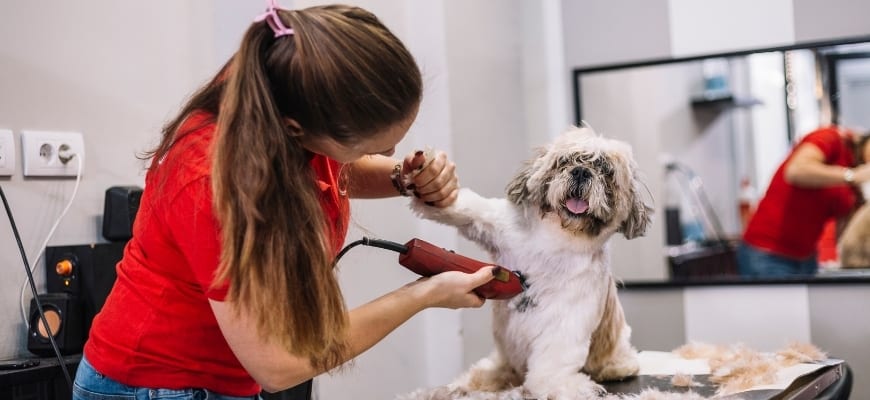
Goldendoodles need a trip to the groomers once a month or so to have their nails trimmed and to be bathed and clipped.
What Impacts the Weight and Height of a Goldendoodle?
Every Goldendoodle’s weight and height are influenced directly by the dog’s parents. In turn, every puppy can take slightly different genes from each parent, including the gene that influences weight and height.
How Are Tiny Goldendoodles Made?
There are three ways to breed a tiny Goldendoodle:
- Cross a standard-sized dog with a smaller breed
- Introduce the dwarfism gene (achondroplasia)
- Crossbreed from runts (the smallest dog in a litter)
Creating Tiny Goldendoodles By Crossbreeding
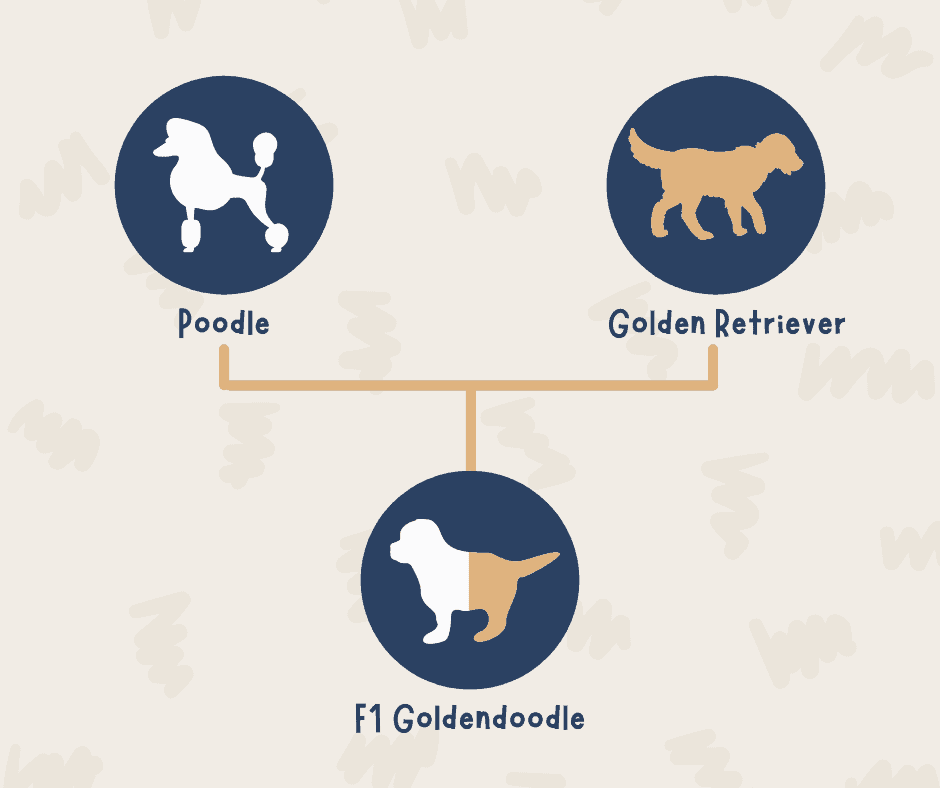
Teacup and Toy Goldendoodles can come from any generation: F1, F1B, F1BB, F2, or even F3.
Goldendoodles are created by crossbreeding a Poodle with a Golden Retriever. Golden Retrievers are large dogs, so to make a smaller pup, you need to use a Toy or Miniature Poodle as the other parent. However, that cross usually produces a Mini Goldendoodle.
So, to make a smaller dog, a breeder might cross an F1 Mini Goldendoodle with another F1, creating an F2 Goldendoodle.
Smaller and Smaller!
However, the more usual process is to breed an F1 Mini Goldendoodle with a Toy Poodle to produce a Toy Goldendoodle. The puppies from that cross would be F1B Toy Goldendoodles.
Finally, to create a Teacup Goldendoodle, you would breed an F1B Goldendoodle with a Toy Poodle. The result would be an F1BB Teacup Goldendoodle.
Breeding Using The Dwarfism Gene
Although it’s generally considered unethical, it is theoretically possible to create a Teacup dog using the dwarfism gene.
However, that genetic abnormality mostly affects the dog’s legs, not the whole animal. So, the dog’s body grows disproportionately, resulting in spinal and joint conditions. Hormonal abnormalities are also common in dogs with dwarfism, and life expectancy can be shorter.
Fortunately, it’s extremely difficult to find two dogs of the correct breeds that carry the dwarfism gene, making producing Teacup pups in this way very uncommon.
Crossbreeding From Runts
Sometimes, breeders use the smallest puppy in a litter to try to produce a tiny dog.
However, these “runts,” as they are commonly called, are often small because they are born with congenital disabilities or have existing medical conditions, which make these dogs physically very small and unsuitable as breeding stock.
Often, Teacup Goldendoodles produced from crossbreeding runts have congenital defects, respiratory problems, brittle bones, and even organ failure.
When Do Goldendoodles Stop Growing?
All sizes of Goldendoodles usually finish growing between one and two years of age, reaching their maximum adult height by the end of the first year and spending the next few months filling out.

Where Can I Buy A Mini Goldendoodle?
The best place to buy a Mini Goldendoodle puppy is from a reputable, licensed breeder.
A responsible breeder will be happy to allow you to visit their kennels so that you can meet your puppy’s parents and siblings and have a look around their operation. Good breeders will provide buyers with veterinary certificates confirming that both the puppy’s parents are free-from congenital diseases that might be passed on to their offspring.
Ask your vet to recommend a breeder, or check out breeders advertising on official Goldendoodle society websites.
Don’t Buy From A Puppy Farm!
Goldendoodles are typically quite expensive, especially if the puppy is well-marked or a particularly desirable color.
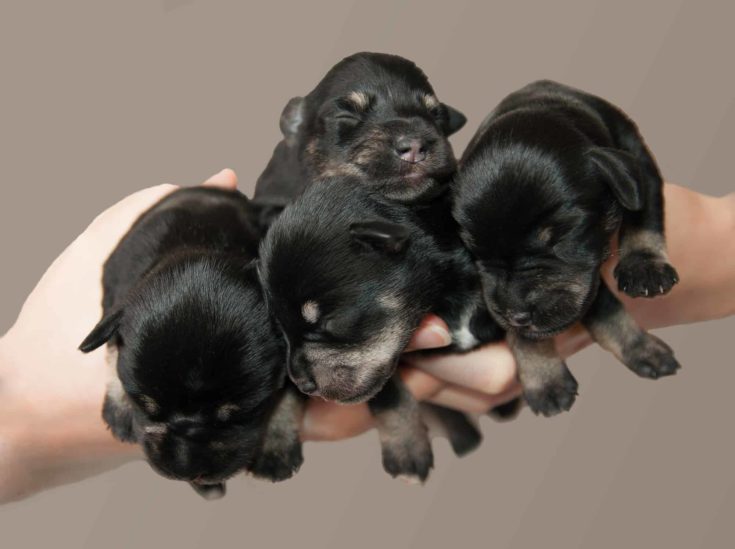
If you spot a puppy advertised online that seems cheap, don’t buy it! The chances are that the advert has been placed by a “puppy farm.”
Puppy farms produce huge numbers of puppies as cheaply and quickly as possible, solely as commercial cash-generating operations. The breeding dogs in puppy farms are typically kept in squalid conditions. Puppies are often sold unvaccinated, and many are already seriously sick before the unsuspecting buyer even gets their little furbaby home.
Rescue Centers
Despite their huge popularity, many Goldendoodles end up in rescue centers, looking for new homes.
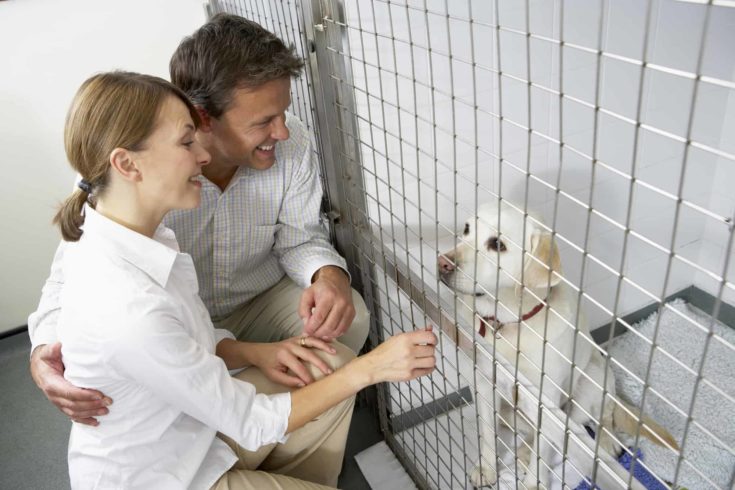
If you’re prepared to take on a rescue dog, good for you! However, bear in mind that many rescue pups have had a bad start in life and can need lots of patient rehabilitation.
Final Thoughts
We hope you enjoyed this guide and found it helpful.
Even if you don’t have space for a full-size Goldendoodle in your home, you can still enjoy all the benefits of Doodle ownership by taking home a Miniature Goldendoodle puppy instead.
If you have a Teacup or Toy Doodle, we’d love to hear about him. Tell us about your pint-sized pup in the comments box below!
And if you loved this article, please share it!

My wife and I have currently sold our home and moved into an apartment complex for Seniors 55+. We had to give our Golden Retriever to our daughter, as he is too big for which the complex will allow weight wise. Obviously, we need a small dog to be at or under the 40 pound limit. I’ve had a Golden all of my life, and it broke my heart to have to give him away, even to my daughter. I miss him so very much. Can a Golden Doodle be a service dog as well, and how do we make that happen? Is there a size that meets the criteria of our complex. We had to sell our home because I just don’t have the stamina to keep it up. I spend the first half of this year either in a hospital or rehabilitation center due to a very serious illness. The time frame was from mid-January to mid-May. I survived this ordeal, however, I have a hole in my heart because of having to give Theo away. Besides, we just could not meet his needs due to lack of stamina. I was wondering if you might respond to me!!!
Look at toy or mini golden
Doodle puppy’s.
In California—had teacup poodle years ago! Loved him!
Looking as I have taken rescues in since now no shedding sounds good!
Much older less work.❤️